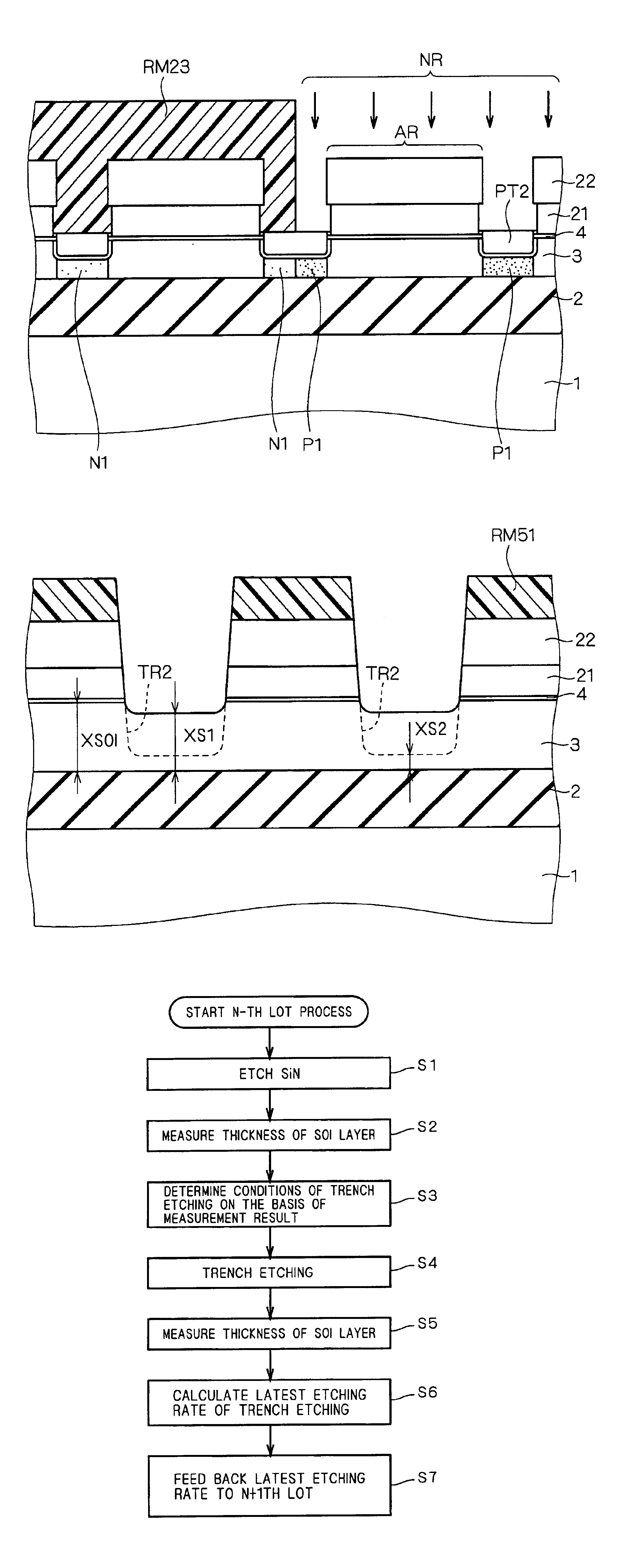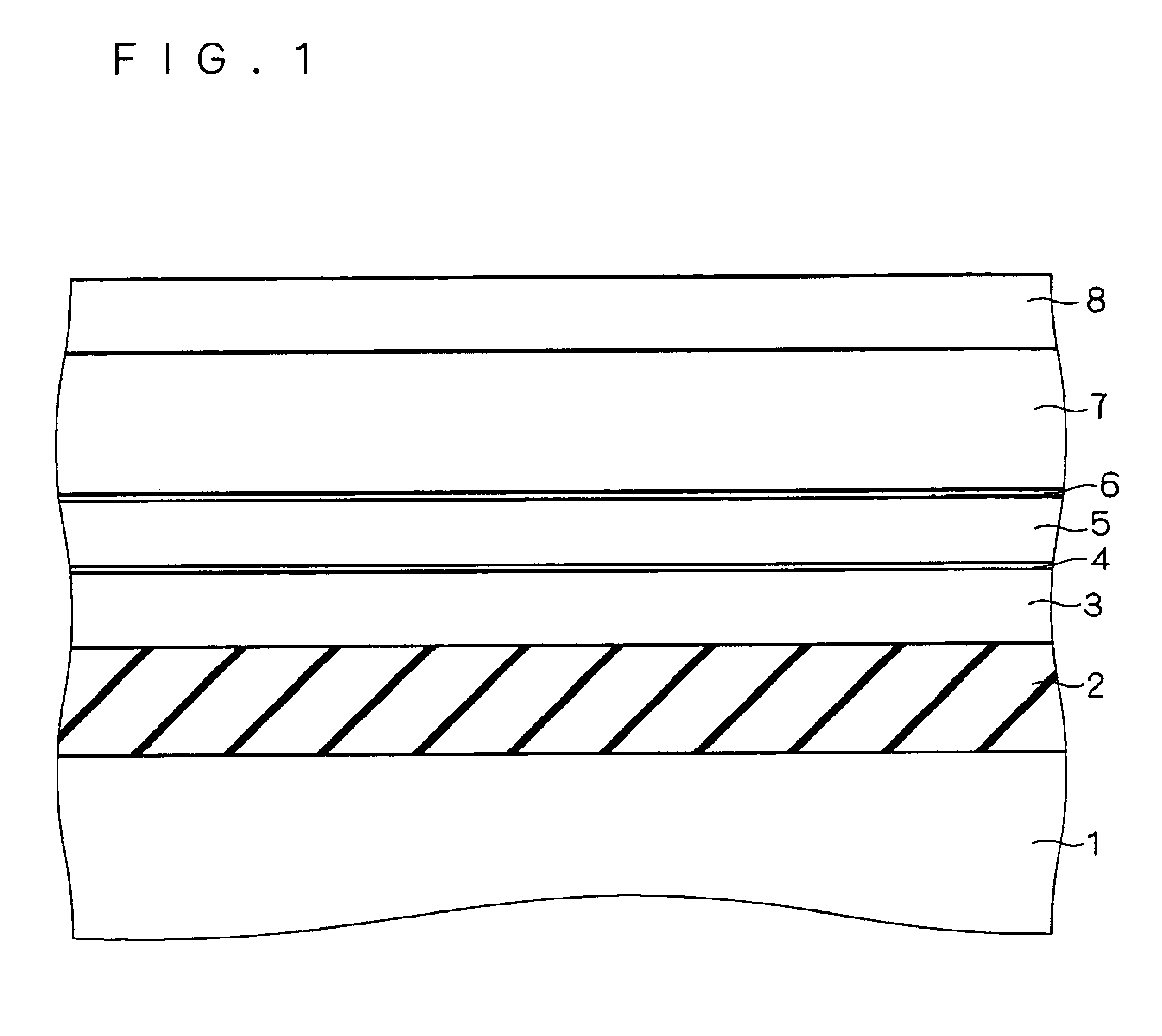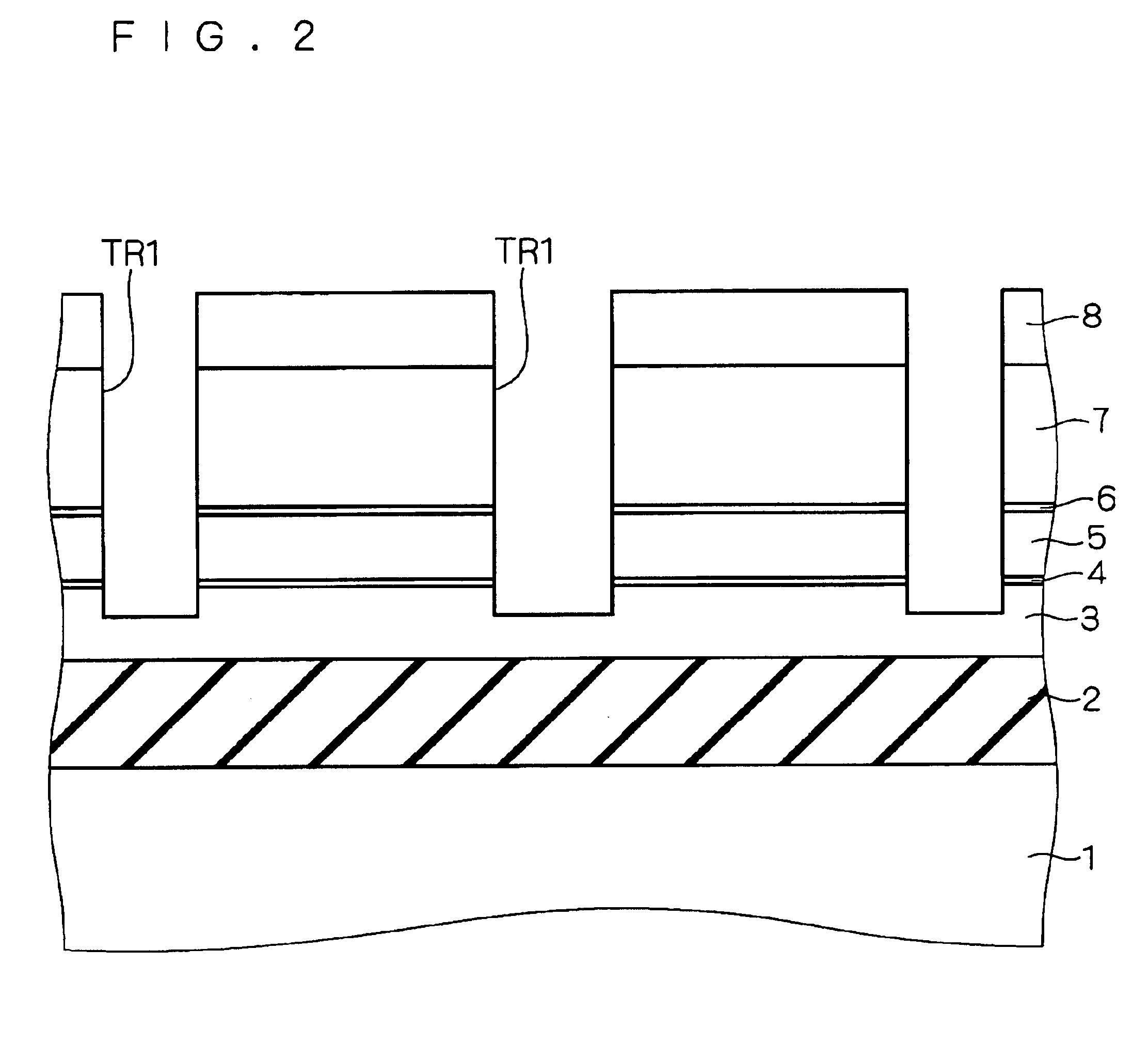Method of manufacturing semiconductor device having trench isolation
a manufacturing method and trench isolation technology, applied in semiconductor devices, semiconductor/solid-state device testing/measurement, electrical equipment, etc., can solve the problems of deterioration in operation breakdown voltage, kinks, and heat treatment after implanting impurities, so as to facilitate analysis on the measurement result of spectroscopic ellipsometry, the effect of suppressing the final depth of trench tr2 and increasing the selectivity of etching on nitride film 22
- Summary
- Abstract
- Description
- Claims
- Application Information
AI Technical Summary
Benefits of technology
Problems solved by technology
Method used
Image
Examples
first embodiment
A. First Embodiment
With reference to FIGS. 1 to 13 as cross sections for sequentially showing a manufacturing process, a semiconductor device manufacturing method which prevents a channel stop implantation layer from being formed in an active region will be described.
First, as shown in FIG. 1, by the SIMOX method for forming a buried oxide film 2 (buried insulating film) by oxygen ion implantation, bonding, or the like, an SOI substrate constructed by a silicon substrate 1, buried oxide film 2, and an SOI layer 3 is prepared. The SOI substrate may be formed by a method other than the above methods.
Usually, the film thickness of SOI layer 3 is 50 to 200 nm, and the film thickness of buried oxide film 2 is 100 to 500 nm. On the SOI substrate, a silicon oxide film (hereinafter, called an oxide film) 4 having a thickness of 10 to 30 nm (100 to 300 Å) is formed by CVD (with a temperature condition of about 800° C.) or thermal oxidation (with a temperature condition of 800 to 1000° C.).
Af...
second embodiment
B. Second Embodiment
B-1. Basic Configuration
The semiconductor device manufacturing method which prevents the channel stop implantation layer from being formed in an active region described by referring to FIGS. 14 to 20 has the process of forming internal-wall oxide film OX1 by oxidizing the internal wall of trench TR2 prior to filling of trench TR2 with an HDP oxide film as described by referring to FIG. 16. It is more preferable to use dry oxidation performed by furnace anneal in oxygen (O2) atmosphere of 800 to 1000° C. for the oxidizing process.
FIG. 27 shows a sectional shape of internal-wall oxide film OX1 formed by dry oxidation. When dry oxidation is performed as shown in FIG. 27, the thickness of internal-wall oxide film OX1 is not uniform in portions.
Specifically, when the thickness of a portion formed on a side wall of trench TR2 of internal-wall oxide film OX1 is J1, the thickness of a portion formed at the corner on the bottom side of trench TR2 is J2, and the thickness ...
modification 1
B-3. Modification 1
The sectional shape of trench TR2 shown in FIG. 27 is not a rectangular shape but the corner of the bottom is inclined so as to extend toward the opening. This is due to slow progress of etching in the corner portion at the time of performing etching to form the trench.
In such a structure, the width of the isolation defined by the width of the bottom face of the trench is narrowed, and insulation for isolation deteriorates. It is not desirable for trench isolation.
Consequently, at the time of performing etching to form the trench, etching conditions are set to perform rather over-etching, thereby forming a trench TR21 having a mesa sectional shape as shown in FIG. 28.
The side walls of trench TR21 are inclined so that the opening is widened from the nitride film 22 side toward the bottom, and the inclination angle is about 95° to 110°. FIG. 29 shows a state where internal-wall oxide film OX1 by, for example, dry oxidation in trench TR21 having such a shape.
As shown...
PUM
 Login to View More
Login to View More Abstract
Description
Claims
Application Information
 Login to View More
Login to View More - R&D
- Intellectual Property
- Life Sciences
- Materials
- Tech Scout
- Unparalleled Data Quality
- Higher Quality Content
- 60% Fewer Hallucinations
Browse by: Latest US Patents, China's latest patents, Technical Efficacy Thesaurus, Application Domain, Technology Topic, Popular Technical Reports.
© 2025 PatSnap. All rights reserved.Legal|Privacy policy|Modern Slavery Act Transparency Statement|Sitemap|About US| Contact US: help@patsnap.com



